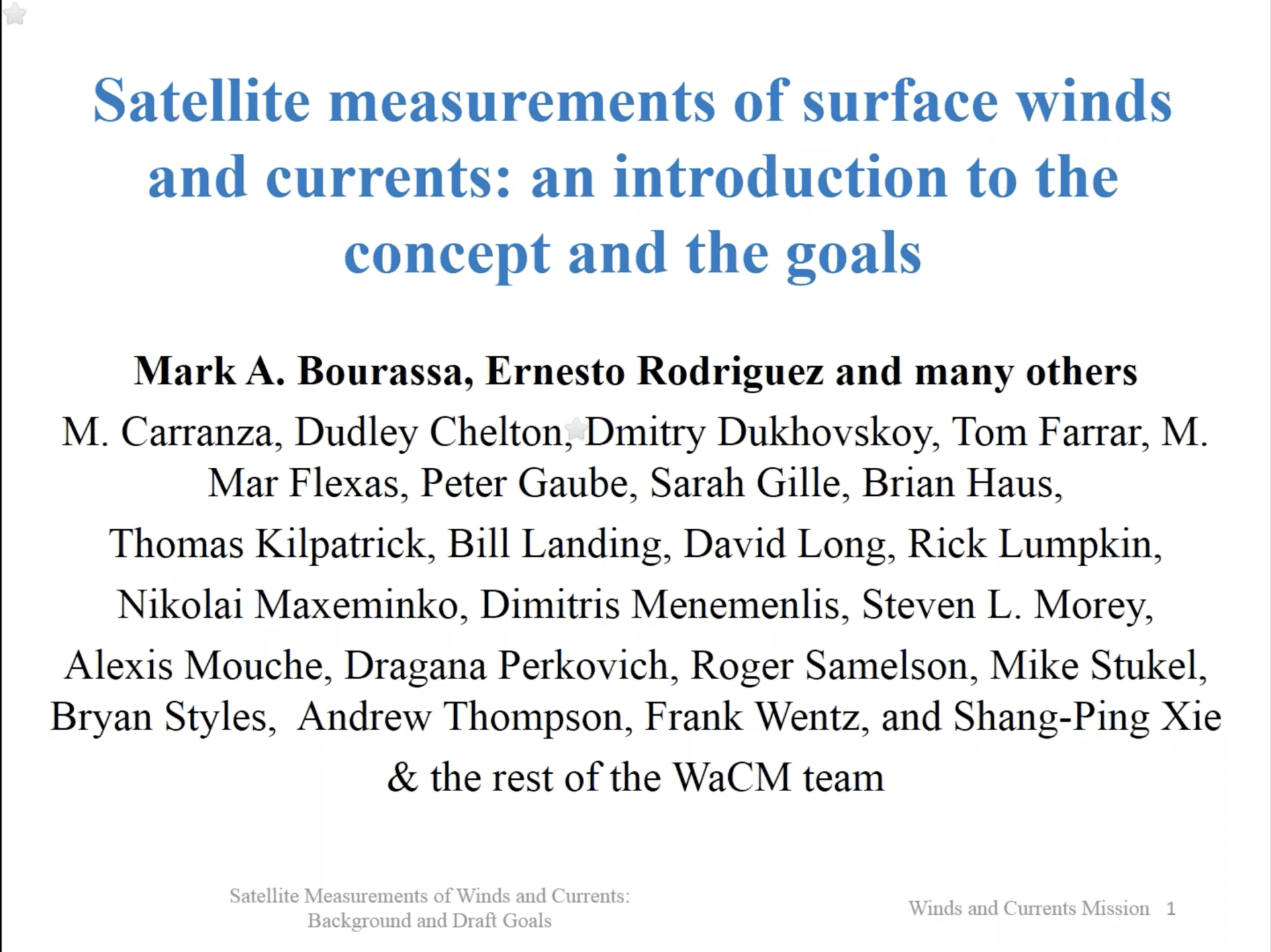Prof. Bourassa presented a seminar titled “Ocean Applications of Satellite Measurements of Winds and Currents Through Ka-Band Scatterometry”.
ABSTRACT:
Ka-band scatterometry is of great use for a wide range of applications, and can be used to measure ocean surface winds and surface currents at relatively high resolution compared to traditional scatterometry. The sensitivity to wind direction is very similar to the more commonly used Ku-band. Thus there is a plethora of applications from weather forecasting (including the environmental conditions around severe weather), search and rescue, ship routing, iceberg identification and tracking, ice edge detection, upper canopy moisture estimation, as well as addressing many science questions regarding ocean forcing, reasons for regional sea level variability, and upper ocean mixing.
High resolution Ka-band scatterometry provides new opportunities to understand air/sea coupling. Modeling suggests that coupling is much stronger in areas of strong current gradients. There are many processes related to currents that benefit from 10 km resolution winds and currents, ocean eddies and atmospheric fronts that benefit from a 5 km scale, as does air/sea coupling (transfers of heat, momentum and gasses) and the vertical transport in the upper ocean and mixing at the bottom of the mixed layer. The last to items are of great interest in physical, bio-biochemical and biological oceanography and could contribute to a wide range of related applications. It would also greatly improve our knowledge of pathways of freshwater in the Arctic and Greenland’s coast, as well as iceberg motion.
Most of these applications require a swath of observations: a two dimensional surface of observations from which spatial derivatives can be calculated. The angels of view from a satellite also influence the swath width and hence sampling, as well as the sensitivity to waves and currents. These factors strongly suggest a satellite design for measuring coincident winds and currents, although there remains considerable flexibility in some of the design characteristics.
The National Academies recommended that observations of coincident surface vector winds and current be considered by NASA as an Explorer class (competed) mission. A draft concept for this mission will be described, along with draft science goals. A few additional applications will be discussed, including possible advantages to forecasting tropical cyclones. Comments and suggestions regarding applications and modest changes in design are most welcome.
A recording of the presentation is available on the anonymous ftp site: ftp://ftp.aoml.noaa.gov/hrd/pub/blog/seminars/2018/Bourassa_HRD_Seminar_20180625.mp4

